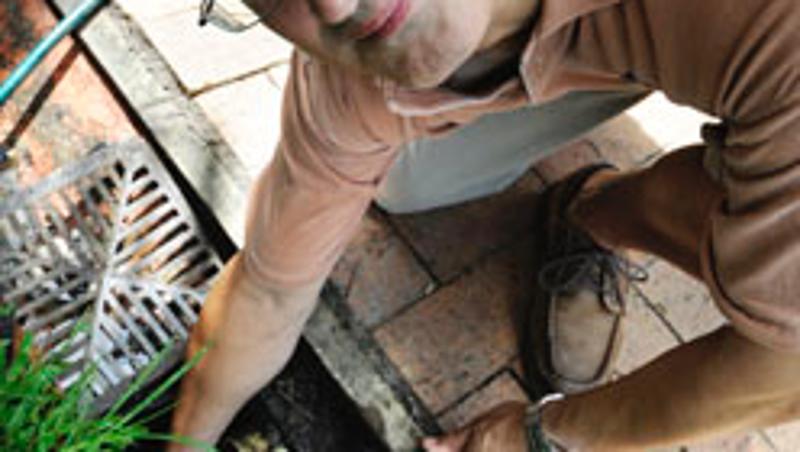
A basic lesson in the use of siphons could provide Queensland homeowners with a cheap solution to flooding in the upcoming storm season.
QUT physics researcher Dr Stephen Hughes said a siphon could be made out of a length of any sort of flexible pipe to drain water away after a flood, and could be an easy and cheap alternative to a pump in some cases.
Dr Hughes made international headlines this year when the Oxford English Dictionary changed the 99-year-old mistake on the definition of a siphon after he notified its editors that siphons work by gravity, not atmospheric pressure as most dictionaries in the world had claimed.
"Weather forecasters say Queensland could be in for record breaking rainfalls this summer and there could be flooding similar in scale to the 1974 floods," Dr Hughes said.
"If that happens, the clean-up bill will be extremely high. But some homeowners should be able to use a siphon to drain water away. All that is needed is a flexible tube, even a garden hose would do, and the outlet must be lower that the inlet for the water.
"Another major plus of a siphon is that no power is needed since the energy effectively comes for free from gravity. This could be handy in areas where powerlines are down."
Dr Hughes said he had received an email from an SES worker prompted by his story on the siphon definition.
"He said that now that he had a correct understanding of how siphons worked he would put the knowledge to good use in training SES crews to drain floodwaters more effectively," he said.
"Think of a siphon as a Christmas candy cane or an umbrella handle. The short side of the cane is immersed in the water at a higher level, for example, flooded backyard, house, car port or basement and the longer side at a lower level to drain the water.
"The greater the height difference, the faster the flow. Flow also is greatly influenced by the diameter of the pipe that you use. For example, doubling the pipe diameter increases the flow rate about 16 times.
"In some cases, a siphon could be used to drain water away while it is raining to prevent flooding."
Dr Hughes said, however, siphons could not solve all flooding problems.
"In some situations a low drainage point would be too far away from a flooded property."
Siphon tips:
- To use gravity, water must be drained from a higher to a lower point, even if the middle of the siphon is higher than either end. The outlet of the siphon tube must be below the upper water level.
- The siphon tube's inlet should be placed at a low point in the floodwater so that as water drains away, more water flows into the low point.
- To increase the flow: position the tube's outlet at the lowest point possible, and use the widest tube available.
- Prime the siphon tube to start the flow by blocking one end and using a funnel at the other to pour water down the tube. If the siphon is working, water will keep flowing out of the other end and when you put a finger over the inlet you will feel the suction.
- A siphon can raise water up to 10m before descending to the draining point. Siphons can transport water over a long distance as long as the height difference is sufficient to overcome friction losses on the way.
Dr Hughes has placed further information on siphons for drainage at http://eprints.qut.edu.au/39120
Media contact: Niki Widdowson, QUT media officer, 07 3138 1841 or n.widdowson@qut.edu.au.




